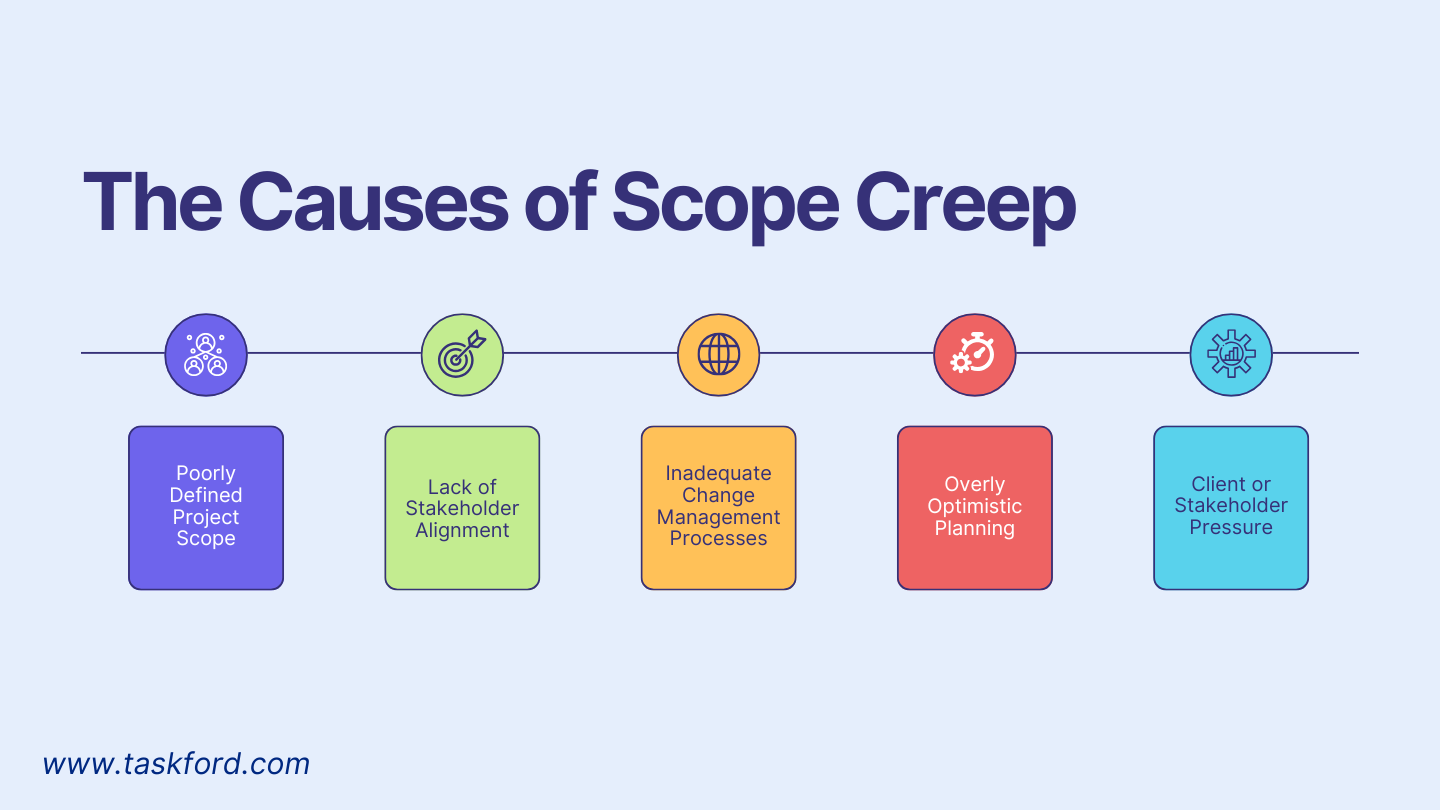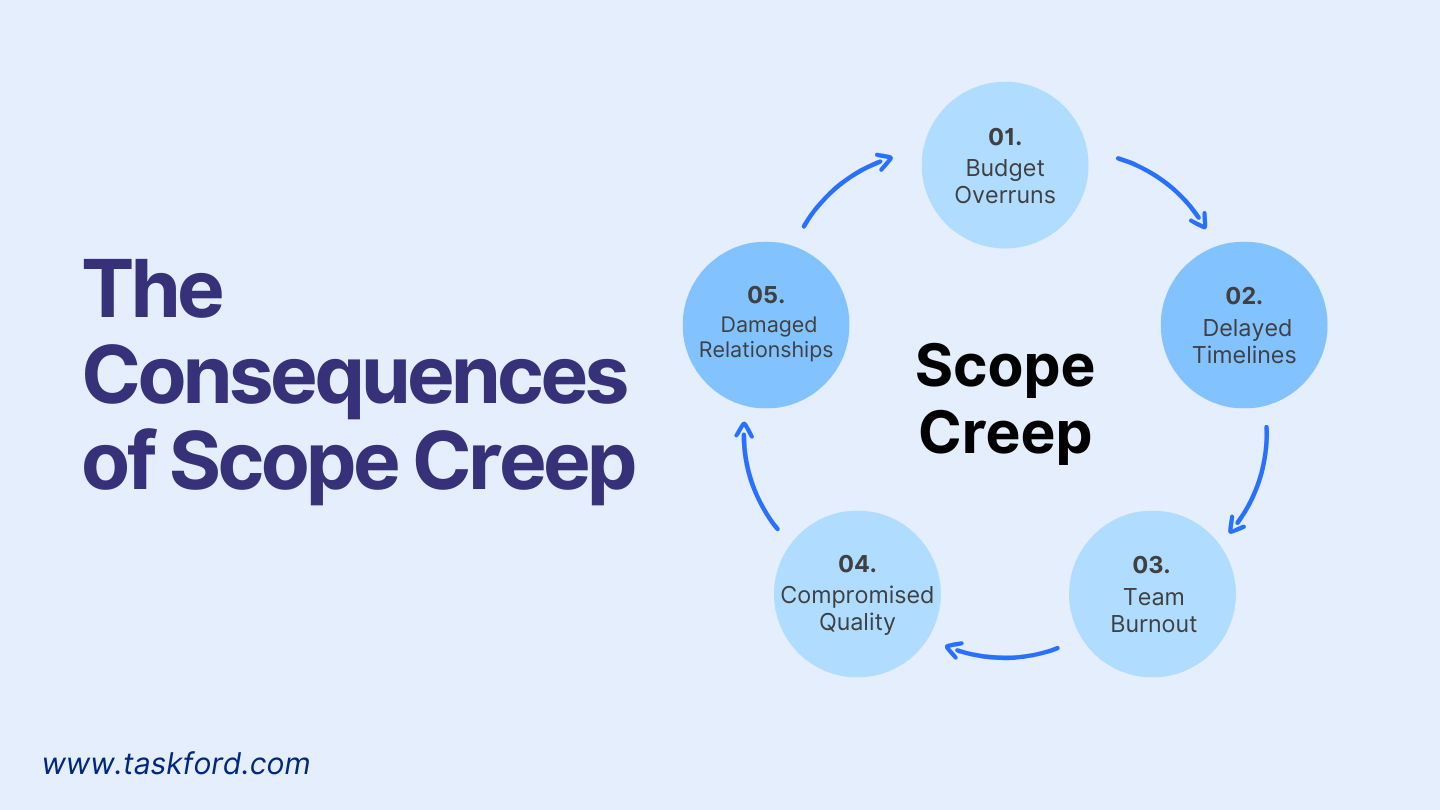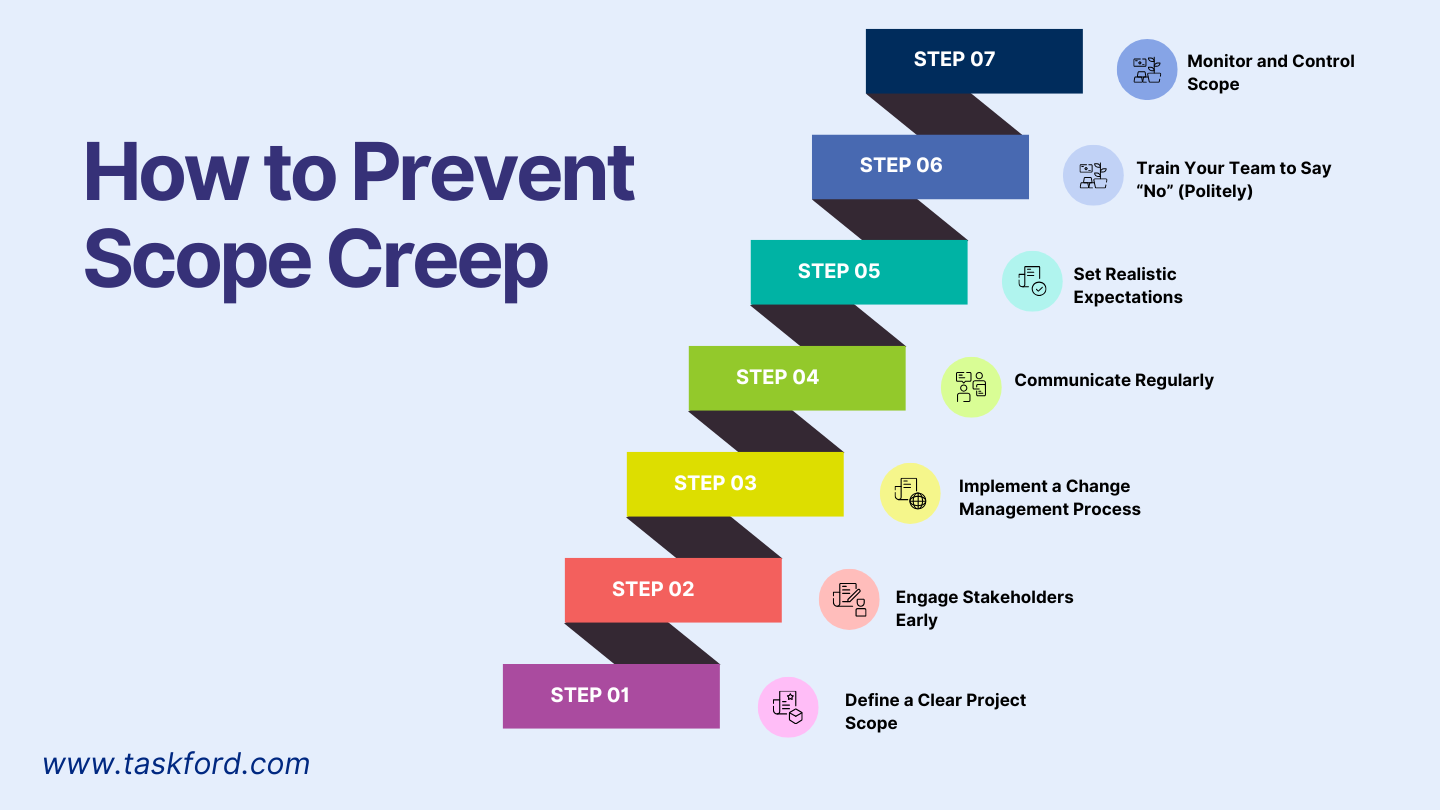Why scope creep is every PM's nightmare - When small changes stretch into infinity
Learn why scope creep haunts project managers and how to prevent it with practical strategies to keep your project on track. Read our expert guide!
Scope creep is a term that sends shivers down the spine of project managers. It’s the silent threat that can turn a well-planned project into a chaotic mess. But what exactly is scope creep, why does it happen, and how can project managers prevent it? This article dives deep into the causes, consequences, and actionable strategies to manage scope creep, offering practical value for anyone looking to keep their projects on track.
What Is Scope Creep?
Scope creep refers to the uncontrolled expansion of a project’s objectives, deliverables, or requirements after the project has started. It often begins with small, seemingly harmless changes like a client requests an extra feature, a stakeholder suggests a minor tweak, or a team member proposes an improvement. Over time, these changes accumulate, stretching the project’s timeline, budget, and resources beyond the original plan.
For those new to the concept, scope creep is one of many project management terms that define challenges in delivering successful outcomes. Understanding its impact is critical for anyone involved in project management.
Why Scope Creep Matters
Scope creep might seem minor at first, but its effects can be significant. As small changes accumulate, they can lead to project delays, budget overruns, and resource shortages. This not only affects timelines but can also create confusion, lower team morale, and damage stakeholder trust.
When new tasks are added without adjusting deadlines, projects often get rushed or compromised. Similarly, extra changes can inflate costs, pushing the project beyond its budget and causing tensions with stakeholders.
Ultimately, scope creep can result in a product that’s misaligned with the original goals, affecting quality and reducing the project’s overall success. Identifying and managing scope creep early is key to keeping projects on track and within scope.
The Causes of Scope Creep

Understanding why scope creep happens is the first step to preventing it. Here are the most common culprits:
1. Poorly Defined Project Scope
A vague or unclear project scope is one of the most common causes of scope creep. When the initial objectives, deliverables, and timelines aren’t thoroughly defined and documented, it becomes easy for changes to sneak in. Without clear boundaries, stakeholders might introduce new ideas or features, believing they are part of the project’s goals, leading to uncontrolled expansion.
2. Lack of Stakeholder Alignment
When project stakeholders—such as clients, team members, and management—aren’t aligned on the project’s objectives, scope creep is almost inevitable. Conflicting expectations or misunderstandings about what is included in the project can result in continual requests for changes, which can cause the project to veer off course. Ensuring that all parties are on the same page from the start helps prevent scope creep.
3. Inadequate Change Management Processes
Without a formal process to handle changes, scope creep can easily take hold. When changes are made without proper evaluation or approval, it’s difficult to track how those changes affect the project. A structured change management process ensures that any adjustments are thoroughly assessed for their impact on timeline, budget, and resources, helping to control scope creep.
4. Overly Optimistic Planning
Sometimes, project managers or teams underestimate the complexity of tasks or overestimate their capacity to handle additional work within the original scope. This can lead to unrealistic planning, which makes it easier for scope creep to occur when unforeseen issues or opportunities arise. Setting more realistic goals and anticipating potential challenges can help mitigate this risk.
5. Client or Stakeholder Pressure
Client or stakeholder pressure can also contribute to scope creep, especially when they request additional features or changes without fully considering the impact. While it’s important to be responsive to client needs, excessive requests can lead to a growing project scope that jeopardizes the project's overall success. Clear communication and managing expectations are key to balancing stakeholder demands with project feasibility.
The Consequences of Scope Creep

Scope creep doesn’t just affect timelines, it impacts every aspect of a project. Here’s how:
1. Budget Overruns: Additional tasks require more resources, whether it’s extra hours for the team, new tools, or external vendors. According to the Project Management Institute, scope creep is a leading cause of budget overruns, with some projects exceeding their budgets by 30% or more.
2. Delayed Timelines: Every new request adds time to the project. What starts as a “quick addition” can push deadlines back by weeks or months, frustrating stakeholders and delaying deliverables.
3. Team Burnout: When the scope expands, team members are forced to juggle additional tasks without extra resources. This leads to stress, burnout, and reduced productivity, which can further delay the project.
4. Compromised Quality: Spreading resources thin often means cutting corners. The team may rush to meet deadlines, resulting in lower-quality deliverables that fail to meet expectations.
5. Damaged Relationships: Scope creep can strain relationships with clients and stakeholders. Missed deadlines, budget disputes, and unmet expectations erode trust, making future collaborations challenging.
How to Prevent Scope Creep: Practical Strategies

Preventing scope creep requires proactive planning, clear communication, and disciplined execution. Here are actionable steps to keep your project on track:
Step 1. Define a Clear Project Scope
A well-defined scope is the foundation of any successful project. Work with stakeholders to outline specific goals, deliverables, timelines, and budgets. Use a project charter or scope statement to document these details and ensure everyone agrees before work begins.
- Tip: Include what’s not in scope. For example, if you’re building a website, specify that ongoing maintenance isn’t included unless explicitly agreed upon.
Step 2. Engage Stakeholders Early
Involve all key stakeholders - clients, team members, and executives - in the planning phase. Conduct workshops or meetings to align expectations and clarify priorities. Document decisions and share them with everyone involved.
- Tip: Use visual aids like flowcharts or Gantt charts to illustrate the project plan and make it easier for stakeholders to understand.
Step 3. Implement a Change Management Process
Establish a formal process for handling change requests. Require stakeholders to submit requests in writing, detailing the proposed change, its purpose, and its potential impact. Evaluate each request against the project’s goals, timeline, and budget before approving or rejecting it.
Example: Create a change request form that includes fields for:
- Description of the change
- Reason for the change
- Estimated impact on time, cost, and resources
- Approval signatures
Step 4. Communicate Regularly
Keep stakeholders informed about the project progress through regular updates. Use status reports, meetings, or project management tools to share milestones, risks, and challenges. Transparent communication reduces the likelihood of surprise requests.
- Tool Suggestion: Tools like TaskFord, Trello, Asana, or Jira can help track tasks and keep everyone aligned.
Step 5. Set Realistic Expectations
When planning, build in buffers for time and budget to account for unexpected changes. Be honest with stakeholders about what’s feasible within the project’s constraints. If a request falls outside the scope, explain the trade-offs and propose alternatives, such as adding it to a future phase.
Step 6. Train Your Team to Say “No” (Politely)
Empower your team to push back on requests that don’t align with the project’s goals. Teach them to redirect stakeholders to the change management process rather than agreeing to changes on the spot.
- Example Phrase: “That’s an interesting idea! Let’s submit it through our change request process to assess its impact on the project.”
Step 7. Monitor and Control Scope
Regularly review the project’s progress against the original scope. Use project management softwares to track tasks, timelines, and budgets. If you notice deviations, address them immediately to prevent small changes from snowballing.
Conclusion
Scope creep is a nightmare because it’s subtle, persistent, and destructive. But with the right strategies, clear scope definition, stakeholder alignment, and disciplined change management, project managers can keep it under control. By setting realistic expectations, communicating effectively, and monitoring progress, you can deliver projects on time, within budget, and to the satisfaction of all involved.
Have you experienced scope creep in your projects? Share your stories or tips with us and check out our other articles on project management guide for more insights on running successful projects.
Making work simpler,
smarter, and more connected
Join our waitlist and be notified first.

Subscribe for Expert Tips
Unlock expert insights and stay ahead with TaskFord. Sign up now to receive valuable tips, strategies, and updates directly in your inbox.






